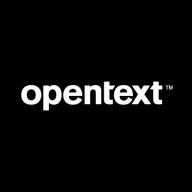

Find out what your peers are saying about CrowdStrike, Microsoft, SentinelOne and others in Endpoint Protection Platform (EPP).
| Product | Market Share (%) |
|---|---|
| Microsoft Defender for Endpoint | 8.2% |
| CrowdStrike Falcon | 7.0% |
| HP Wolf Security | 5.9% |
| Other | 78.9% |
| Product | Market Share (%) |
|---|---|
| OpenText EnCase eDiscovery | 3.1% |
| Microsoft Purview eDiscovery | 10.7% |
| kCura Relativity | 5.6% |
| Other | 80.6% |


| Company Size | Count |
|---|---|
| Small Business | 80 |
| Midsize Enterprise | 40 |
| Large Enterprise | 92 |
| Company Size | Count |
|---|---|
| Small Business | 2 |
| Midsize Enterprise | 2 |
| Large Enterprise | 3 |
Microsoft Defender for Endpoint is a comprehensive security solution that provides advanced threat protection for organizations. It offers real-time protection against various types of cyber threats, including malware, viruses, ransomware, and phishing attacks.
With its powerful machine-learning capabilities, it can detect and block sophisticated attacks before they can cause any harm. The solution also includes endpoint detection and response (EDR) capabilities, allowing organizations to quickly investigate and respond to security incidents. It provides detailed insights into the attack timeline, enabling security teams to understand the scope and impact of an incident.
Microsoft Defender for Endpoint also offers proactive threat hunting, allowing organizations to proactively search for and identify potential threats within their network. It integrates seamlessly with other Microsoft security solutions, such as Microsoft Defender XDR, to provide a unified and holistic security approach. With its centralized management console, organizations can easily deploy, configure, and monitor the security solution across their entire network.
Microsoft Defender for Endpoint is a robust and scalable security solution that helps organizations protect their endpoints and data from evolving cyber threats.
eDiscovery collection tools address the rise in dispersed and remote workforces, the proliferation of mobile devices and new sources of data. Comprehensively collecting data across all data sources, including endpoints, such as desktops and laptops, is critical to defensibility. Collection analytics and culling is key to efficient digital investigations, narrowing the document collection to drive down the cost of legal review.
With OpenText™ EnCase™ eDiscovery, organizations can streamline the collection, culling and preservation of data across diverse sources in a single efficient process.
We monitor all Endpoint Protection Platform (EPP) reviews to prevent fraudulent reviews and keep review quality high. We do not post reviews by company employees or direct competitors. We validate each review for authenticity via cross-reference with LinkedIn, and personal follow-up with the reviewer when necessary.